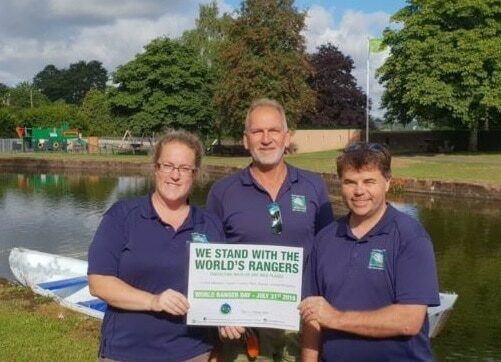 The Grand Western Canal Country Park and local nature reserve is managed by the Canal Ranger Service, comprising a Canal Manager, and two Rangers.
The Grand Western Canal Country Park and local nature reserve is managed by the Canal Ranger Service, comprising a Canal Manager, and two Rangers.
The Ranger Service is based in the Canal Basin in Tiverton, but they undertake work throughout the Country Park. Their work is led by the Grand Western Canal Management Plan.
The Rangers are ably assisted by a range of volunteers as well as school and college work placements. For more information on volunteering, please contact the Canal Ranger Service.
The routine maintenance of the Country Park can be split into two ‘seasons’.
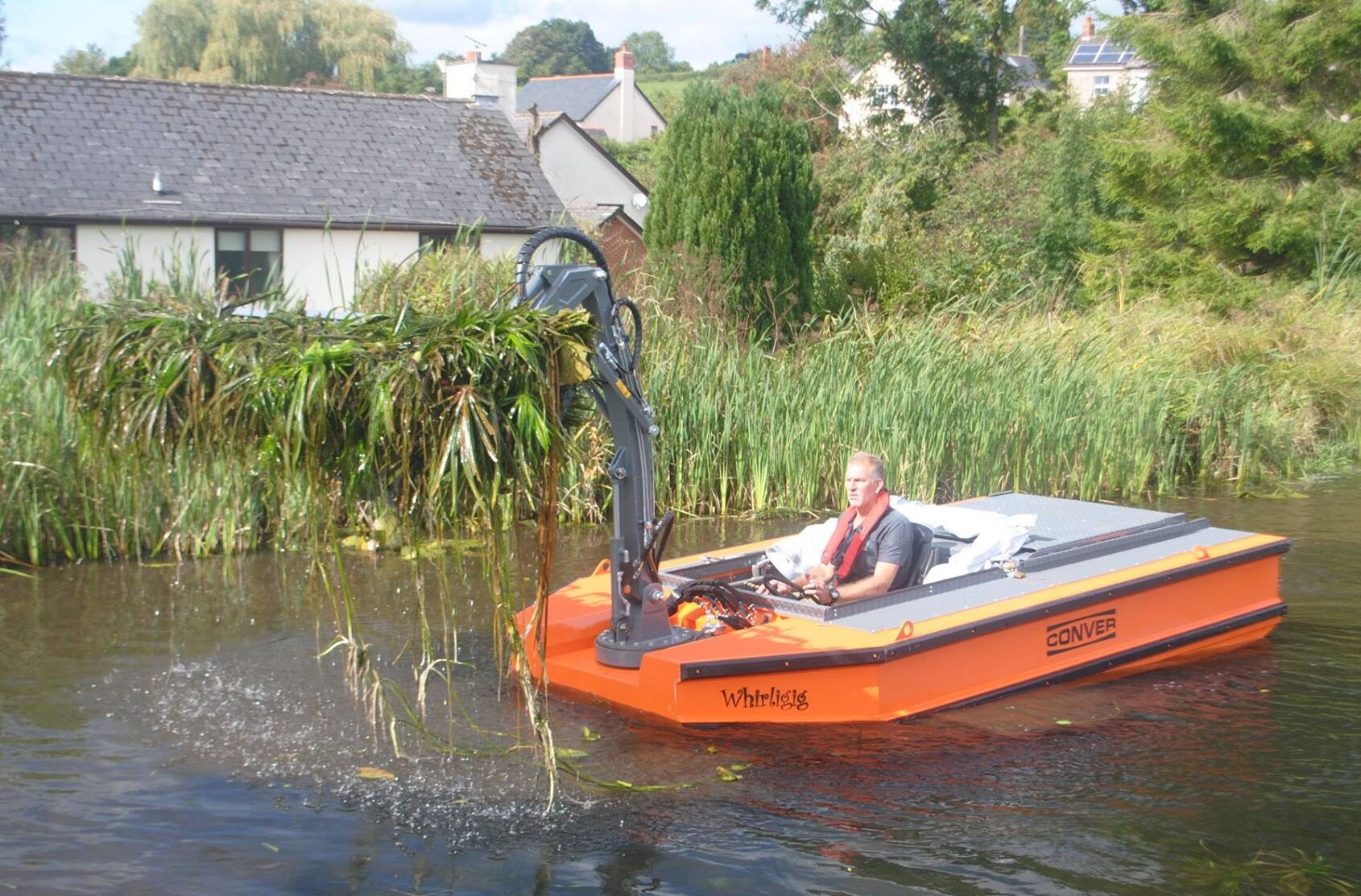
From late autumn to early spring the main emphasis is on tree and hedge management. Tree works include restoring a coppice regime in many woodland areas beside the Canal and cutting back branches that overhang the Canal.
In addition to these major tasks is a huge variety of other work undertaken by the Rangers, such as running events, leading volunteers and guiding educational visits by local primary schools and managing a range of contractors who undertake tasks such as dredging, towpath resurfacing, tree surgery and hedge cutting.
-
Volunteers
Volunteers
Why not volunteer or do your work experience placement with the Grand Western Canal Country Park Ranger Service. Come along, join in and get some fresh air and exercise whilst taking part in some practical habitat management.The Ranger Service is always looking for conservation volunteers to assist with the day to day running of the Country Park. With eleven and a quarter miles of canal to look after there is plenty of work that volunteers/students can get involved in, including hedge laying, coppicing, tree planting, pond maintenance and clearing scrub, or if that’s not your thing, how about helping out with litter picking, patrolling or wildlife surveys?
Volunteering needn’t take up too much of your time. When you volunteer is largely up to you. Some people volunteer on a regular basis each week or month. Others when they have a spare day.
Volunteering takes place during traditional ‘office hours’, although there are opportunities to help out at weekends on one of our Volunteer Day events or become a volunteer warden as part of the Friends of the Grand Western Canal group.
For more information please contact the Ranger Service on 01884 254072 or email gwcanal@devon.gov.uk.If you are interested in becoming a volunteer warden then please visit the Friends of the Grand Western Canal website to find out more.
-
Hedge laying
Hedge laying
The Country Park contains nine miles of hedgerow that borders the towpath. After several decades of being annually trimmed with a tractor-mounted flail, the hedge has become quite sparse in many areas.
Hedge laying is a traditional form of hedge management which promotes thick regrowth from the base of the hedge and creates a bushy hedge which acts well as a stockproof barrier and provides great habitat for wildlife. Hedge laying is particularly popular with the volunteers who spend many days on this rewarding activity on the second Sunday of each month from November to March each year.
-
Towpath resurfacing
Towpath resurfacing
Between 2002 and 2009 all of the towpath was resurfaced using crushed stone from the quarry at Westleigh. This work has provided a wide, flat and dry path for visitors of all abilities to use throughout the year.
In the years since this surfacing work was undertaken, grass has grown in at the edges narrowing the width of the stone surface; and the verges have ‘risen’ as dead plant material has mulched down, leaving many sections slightly sunken and prone to puddles.
To resolve this, occasional maintenance work is required. Excavators are used to scrape back the edges of the towpath in the worst affected areas and in some busier sections (such as Canal Basin to Tidcombe Bridge, Crownhill Bridge to the Aqueduct) the towpath is completely resurfaced.
-
Dredging
Dredging
Over time the Canal tends to fill up with silt from decomposing plant matter and soil washed in from adjacent roads and farmland. Unless the Canal is periodically dredged, it would eventually silt-up, preventing boating and angling and leading to a deterioration in wildlife habitats.
Between 2002 and 2007, most of the Canal was dredged thanks to a substantial capital investment made by Devon County Council, Mid Devon District Council and the EU Interreg IIIb programme. The work was phased over several years in order to reduce the immediate impact on wildlife, and monitoring has shown an increase in the variety of water plants (on which the rest of the Canal food chain relies) as a result of the work. The future of boating and angling on the canal has also been secured for many years to come.
The Ranger Service has also been working with adjacent landowners to promote sustainable land use, in an effort to reduce soil eroding into the Canal in the future. Most of the offside boundary of the Country Park has been fenced to protect the banks from erosion by livestock and to create wildflower rich buffer strips that provide excellent habitats for a range of wildlife.
-
Offside buffer strips
Offside buffer strips
Within the canal’s Countryside Stewardship Scheme Agreement 4km of offside bank have been fenced to create buffer strips. These strips on the offside protect the canal from silt and nutrient pollution and provide excellent habitats for wildlife. Read a case study of the project.
-
Culverts
Culverts
Between 2009 and 2012 a major project to clean and repair the canal’s 30 culverts took place. The culverts allow water from streams and ditches to flow under the canal but over time they tend to fill up with silt and debris. Specialist enclosed-access teams undertook this important work.
- Water levels
Water levels
An important task that the Canal Rangers have to manage is the water levels within the canal. There are several different types of water input into the canal, which need to be monitored, including:
- Rain
- Temporary overland flows during times of rain, including ditches and road drainage.
- Land drains in adjacent farmland along the offside bank.
- Permanent watercourses which discharge into the canal
- Spring water feeds – from the bed of the canal between Fenacre Bridge and Lowdwells.
- Flood water from over topping watercourses
Since the breach in November 2012, major improvements have been made to the Canal’s water management systems.
Canal levels are maintained within an acceptable range through the operation of:
- fixed weirs (where water over tops into adjacent watercourses in a controlled manner, once a certain level is reached)
- tilting weir (remotely-controllable)
- guillotine sluice near Fossend Bridge near Burlescombe;
- pen stock sluice at Snakes Wood, near Tiverton; and at Fossend Bridge, Burlescombe;
In most years some small-scale leakage is discovered somewhere along the canal, often indicated by damp patches or puddles at the base of embankments. Wherever possible, action is taken to seal leaks, and if attempts to seal leaks are unsuccessful or unaffordable, monitoring of the leaks is undertaken to check that they do not become worse.
Other processes that lead to water loss from the canal include evaporation, and transpiration from trees. Most of the canal is lined with trees, a large proportion of which will be obtaining water from the canal. The volume of water that can be drawn up by a large tree is considerable, although the impact is offset to some degree by the reduction in evaporation due to the shading effect of its branches and leaves.
- Canal Breach
Canal Breach
In November 2012, the Canal suffered a major breach of its largest embankment, near Swing Bridge, Halberton. Devon County Council quickly committed the funding not only to repair the embankment but also to upgrade the Canal’s infrastructure to reduce the risk of future breaches. The rebuilt embankment was reopened in March 2014 in time for the Canal’s Bicentenary celebrations and in the subsequent years major improvements have been made to the Canal’s water management systems.
- New Noticeboards
Noticeboards
In order to enrich the experience of visitors to the Grand Western Canal Country Park, in 2024 12 new A0-sized noticeboards were installed at access points along the towpath. As well as containing useful visitor information about activities, events, safety and codes of conduct, each noticeboard contains a new A2 panel featuring a map of the canal surrounded by stories and images relating to the wildlife, heritage and management in that area.
Funding for the purchase of the noticeboards and for the design and production of the panels has been generously provided by the Inland Waterways Association and by the Mid Devon Prosperity Fund, using government ‘levelling up’ funds, administered by Mid Devon District Council.
Privacy policy for Grand Western Canal Country Park customers.
- Water levels
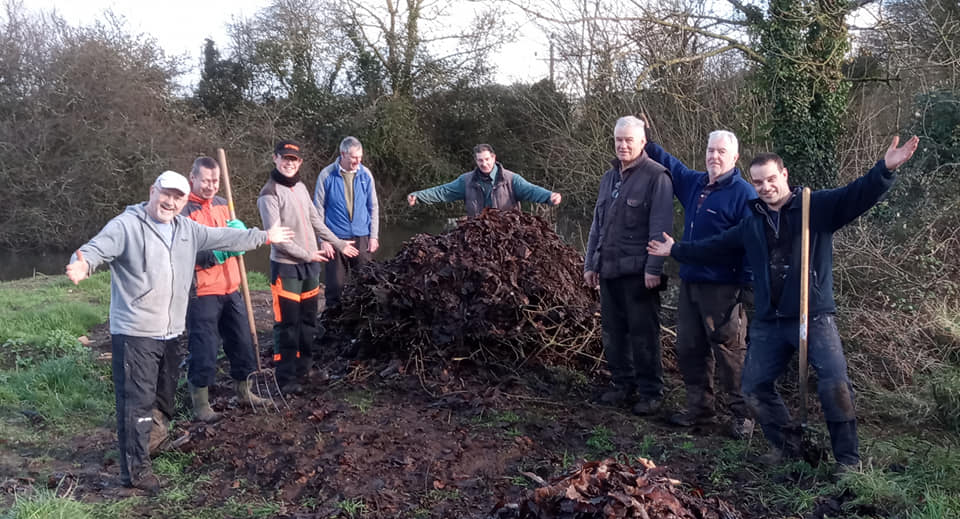
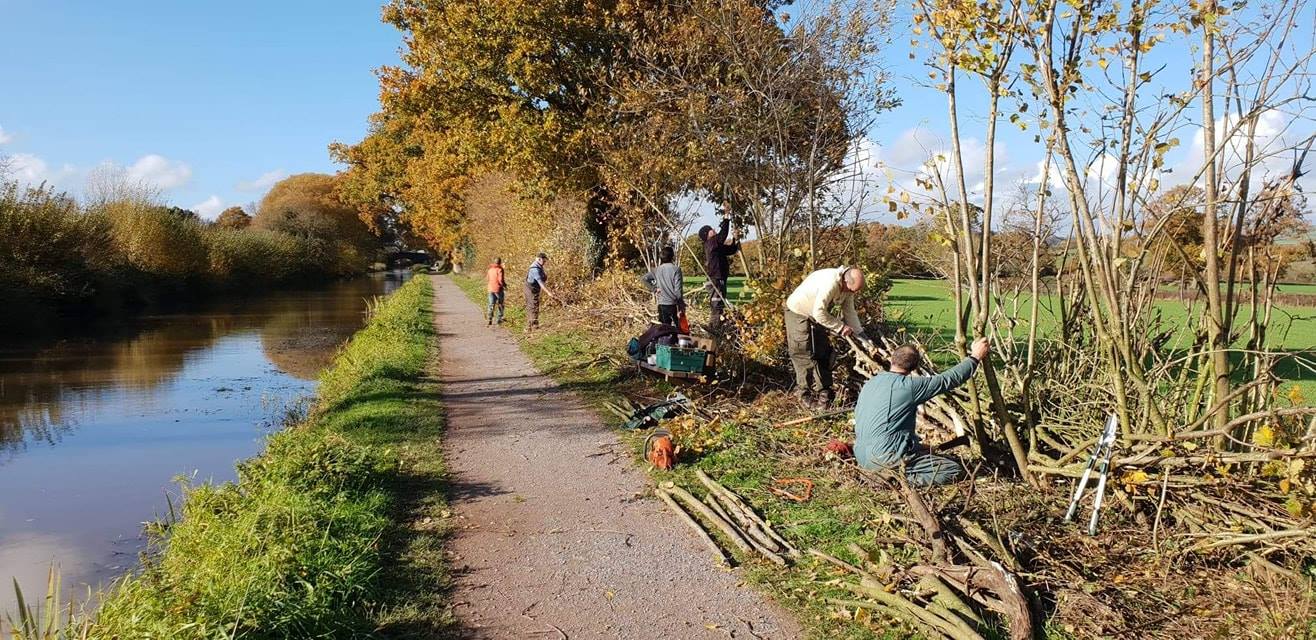
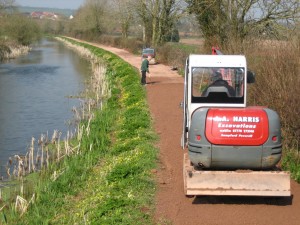 Between 2002 and 2009 all of the towpath was resurfaced using crushed stone from the quarry at Westleigh. This work has provided a wide, flat and dry path for visitors of all abilities to use throughout the year.
Between 2002 and 2009 all of the towpath was resurfaced using crushed stone from the quarry at Westleigh. This work has provided a wide, flat and dry path for visitors of all abilities to use throughout the year.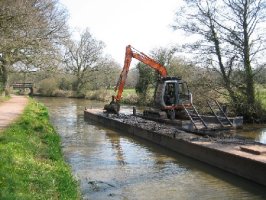
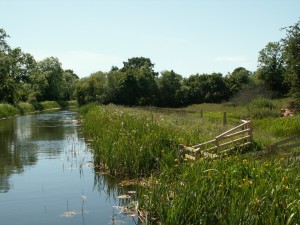
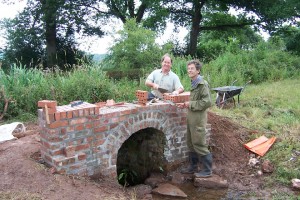 Between 2009 and 2012 a major project to clean and repair the canal’s 30 culverts took place. The culverts allow water from streams and ditches to flow under the canal but over time they tend to fill up with silt and debris. Specialist enclosed-access teams undertook this important work.
Between 2009 and 2012 a major project to clean and repair the canal’s 30 culverts took place. The culverts allow water from streams and ditches to flow under the canal but over time they tend to fill up with silt and debris. Specialist enclosed-access teams undertook this important work.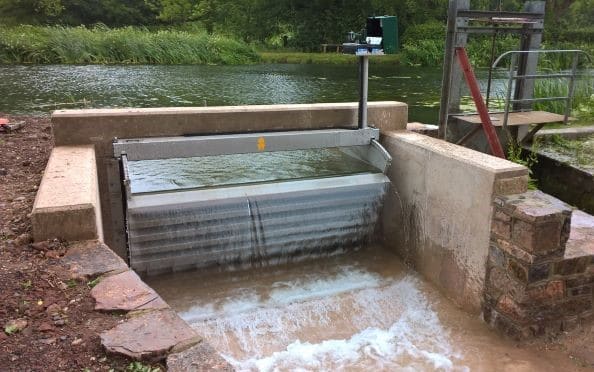
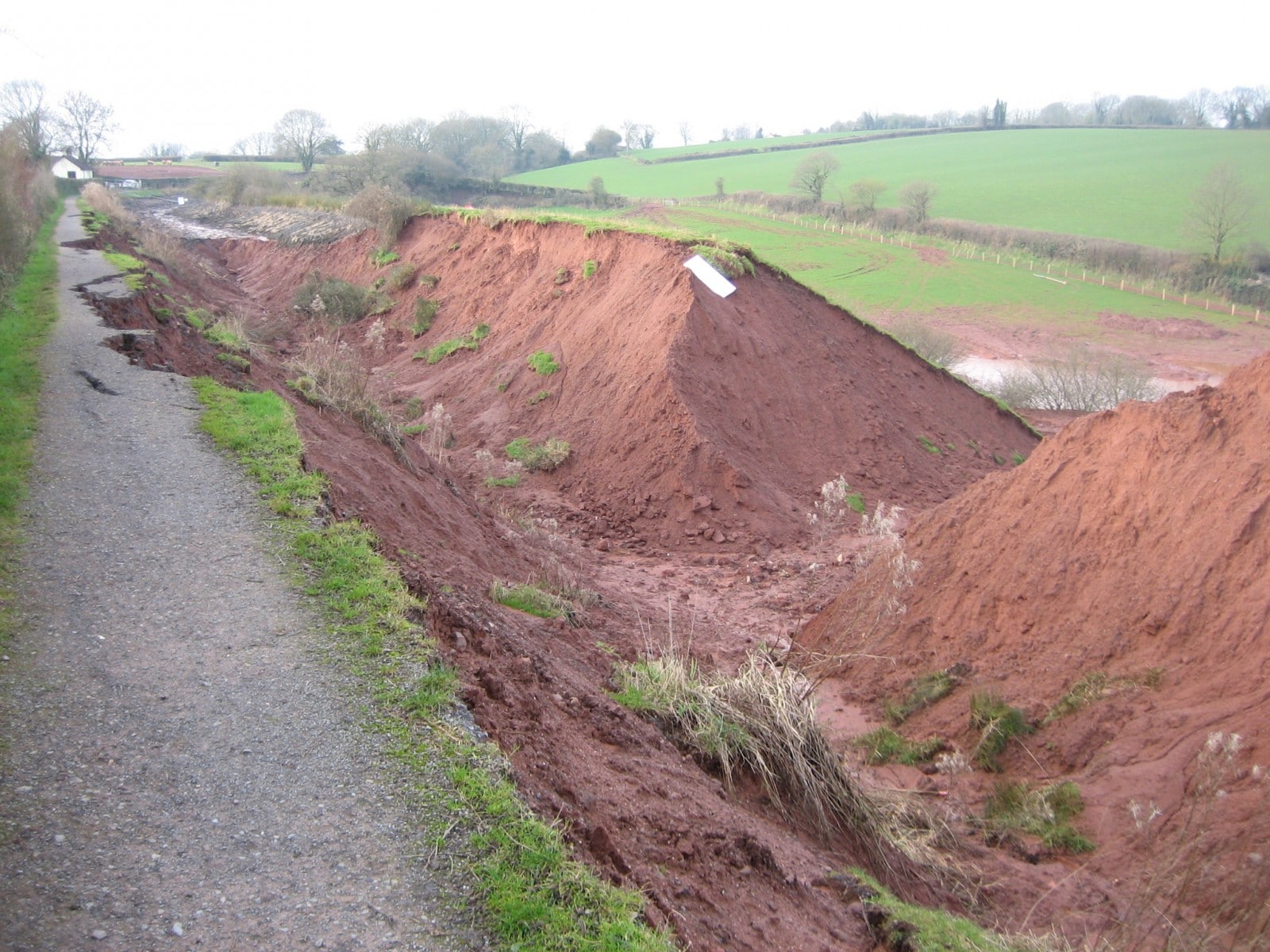
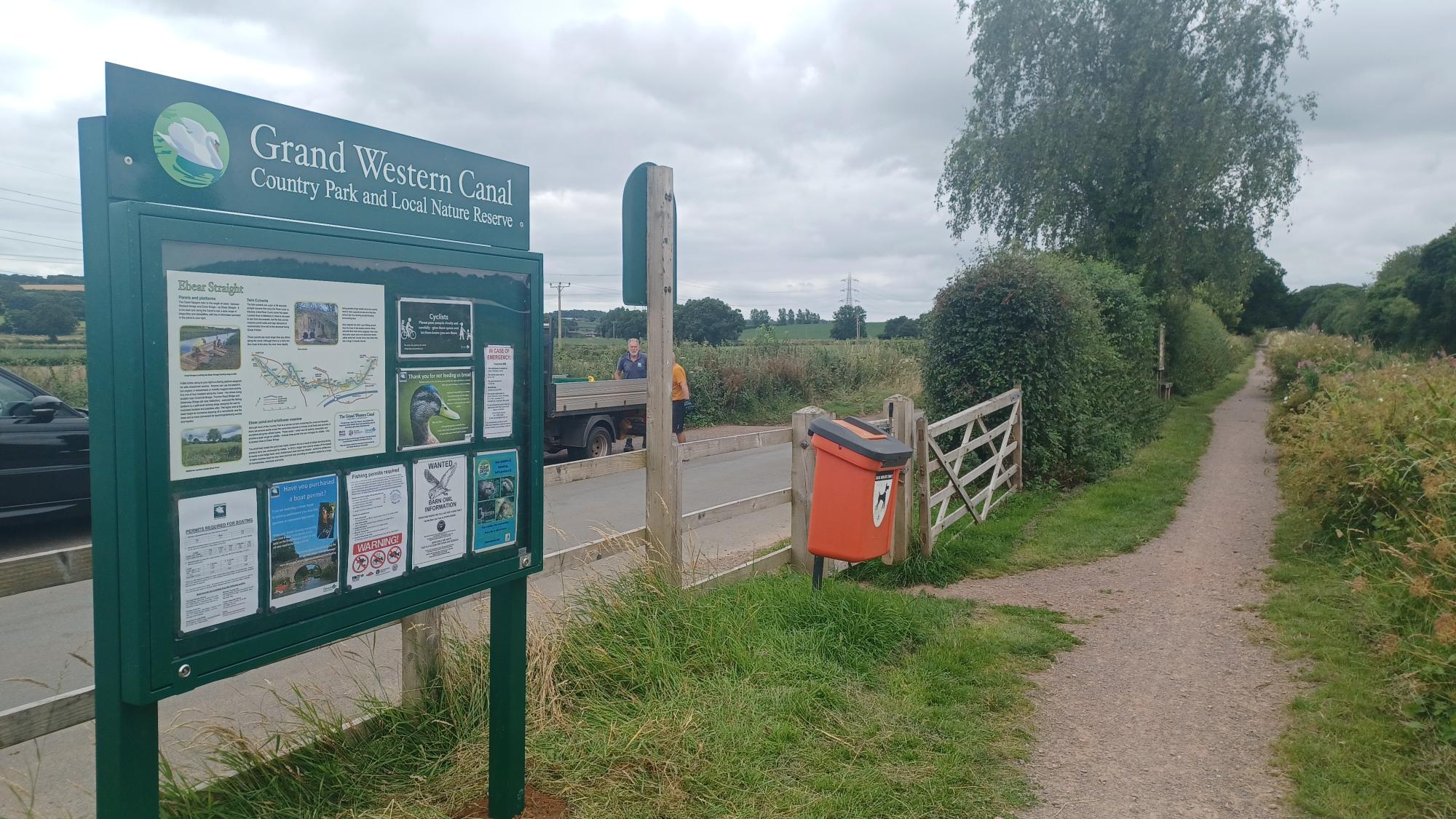 In order to enrich the experience of visitors to the Grand Western Canal Country Park, in 2024 12 new A0-sized noticeboards were installed at access points along the towpath. As well as containing useful visitor information about activities, events, safety and codes of conduct, each noticeboard contains a new A2 panel featuring a map of the canal surrounded by stories and images relating to the wildlife, heritage and management in that area.
In order to enrich the experience of visitors to the Grand Western Canal Country Park, in 2024 12 new A0-sized noticeboards were installed at access points along the towpath. As well as containing useful visitor information about activities, events, safety and codes of conduct, each noticeboard contains a new A2 panel featuring a map of the canal surrounded by stories and images relating to the wildlife, heritage and management in that area.